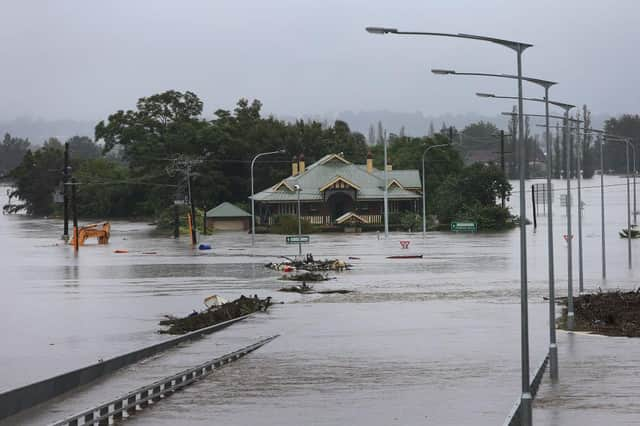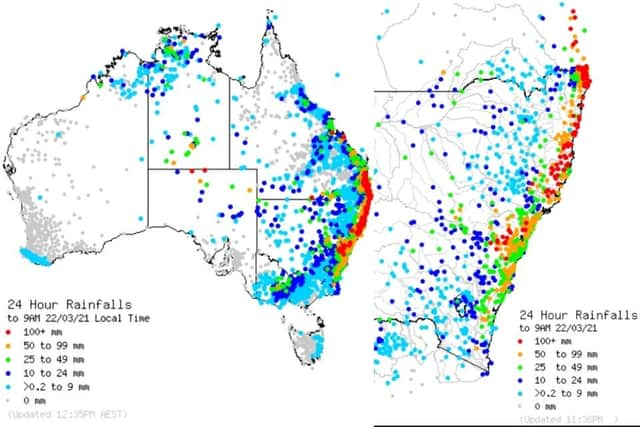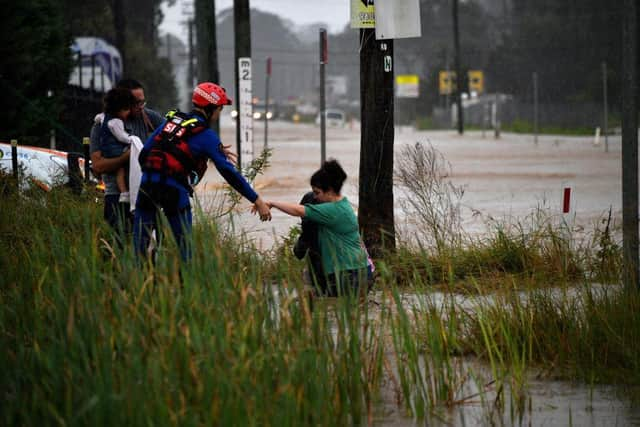Australia floods 2021: Sydney weather forecast, New South Wales flooding map – and why are there so many spiders?


Emergency services fear up to 54,000 people could eventually be displaced by rain waters in the country’s state of New South Wales.
18,000 have already been forced to evacuate the state, which had recorded two-thirds of its annual rainfall in less than a week in some areas.
Advertisement
Hide AdAdvertisement
Hide AdPrime Minister Scott Morrison announced on 22 March that 35 communities in the northern region of the territory had become isolated, and emergency services had conducted over 700 rescues from floodwaters.


On Tuesday 23 March, 15,000 more residents were waiting to see if they too would need to flee their homes, as New South Wales Premier Gladys Berejiklian said several weather fronts continued to effect large areas of the state.
Here is everything you need to know about it.
What’s the damage?
Rising waters have affected thousands of people, and led to the need for multiple evacuation centres to provide aid and temporary accommodation to those affected by the floods.


The Warragamba dam west of Sydney began overflowing on 21 March, as local authorities are urged people not to drive through flooded areas as they could get easily swept away by strong currents.
Flood warnings and evacuation orders remain in place along the state’s Mid North Coast and in western Sydney, where communities were preparing for water levels higher than they had been since 1929.
On the western outskirts of Sydney, the water height of the Nepean River peaked higher than it has done since 1961, and northwest of the city, the Hawkesbury River was expected to reach levels not seen in nearly 35 years.
Many houses have been inundated with water and destroyed, and it is feared cleanup efforts – which are being aided by 1,000 defence personnel – could last well into April.
Why is it raining so much?
Australia is a country usually associated with hot, dry weather. Just a year ago, the news was dominated by the unprecedented wildfires that swept vast swathes of the areas now seeing flooding caused by rainfall described in some areas as once-in-100-year events.
Advertisement
Hide AdAdvertisement
Hide Ad“I don’t know any time in our state’s history where we have had these extreme weather conditions in such quick succession in the middle of a pandemic,” New South Wales Premier Gladys Berejiklian told reporters. “So, they are challenging times for New South Wales.”
So just why has there been so much rain in Australia?
Justin Robinson, national flood services manager at Australia’s Bureau of Meteorology, described the rainfall as a “very significant flood event for New South Wales.”
“I’ve been a flood forecaster with the bureau for 20 years and this is probably the worst flooding that I’ve experienced,” he said.
It's all the result of a complex weather pattern known as La Niña, which occurs every few years as a result of variations in ocean temperatures and is the colder, lesser known cousin of El Niño.
La Niña typically brings more rainfall and tropical cyclones during summer (two of Australia's three wettest years on record have been during La Niña events), and scientists say climate change is intensifying its impact.
The system has effects on the weather across the globe, and could even affect conditions in the UK as it often precedes a more active Atlantic hurricane season, meaning more post-tropical storms could reach our shores later in the year.
Why are there so many spiders?
Humans aren’t the only creatures affected by the floods.
Other animals have need to escape the rising waters too, and Australia’s vibrant (and often dangerous) spider and snake populations have also been spotted climbing away from encroaching floods.
It's led to scenes that would make any arachnophobe shudder, the sight of thousands of spiders clambering up the sides of houses to get away from the deluge.
Advertisement
Hide AdAdvertisement
Hide Ad“It’s amazing. It’s crazy,” resident Matt Lovenfosse told Guardian Australia. “The spiders all crawled up on to the house, on to fences and whatever they can get on to.”
Shenae Varley saw similar scenes when she and her husband visited Penrith near Sydney, saying ants, crickets and “basically every insect” were “all just trying to get away from the flood waters.
"My husband videoed it, because I was not going close to it,” she added. “When he was standing still he had spiders climbing up his legs."
How many people have died?
Thankfully, no lives have been lost to the rains at the time of writing.
“We are grateful at this point that no lives have been lost so far,” Australia’s Prime Minister told the country's Parliament. “But weakened foundations for buildings, for roads and trees, they all create risk, as do downed power lines and rising water levels.”
What’s the forecast?
It seems Australia will have to wait until drier weather returns, though the rains are expected to abate by Wednesday (24 March).
Despite rain levels declining, the Prime Minister said floodwaters will “remain persistent for some time.”
“I’m advised that the rain and flood situation does remain dynamic and extremely complex,” Morrison said.
Advertisement
Hide AdAdvertisement
Hide AdGovernment meteorologist Agata Imielska said: “It is almost impossible to believe but we will see blue skies and sunshine just later this afternoon in western Sydney and on the Mid North Coast.”
“It is very important to remember that even though we’ll have blue sky and sunshine returning, flooding will continue and the flood risk will continue,” Imielska added.